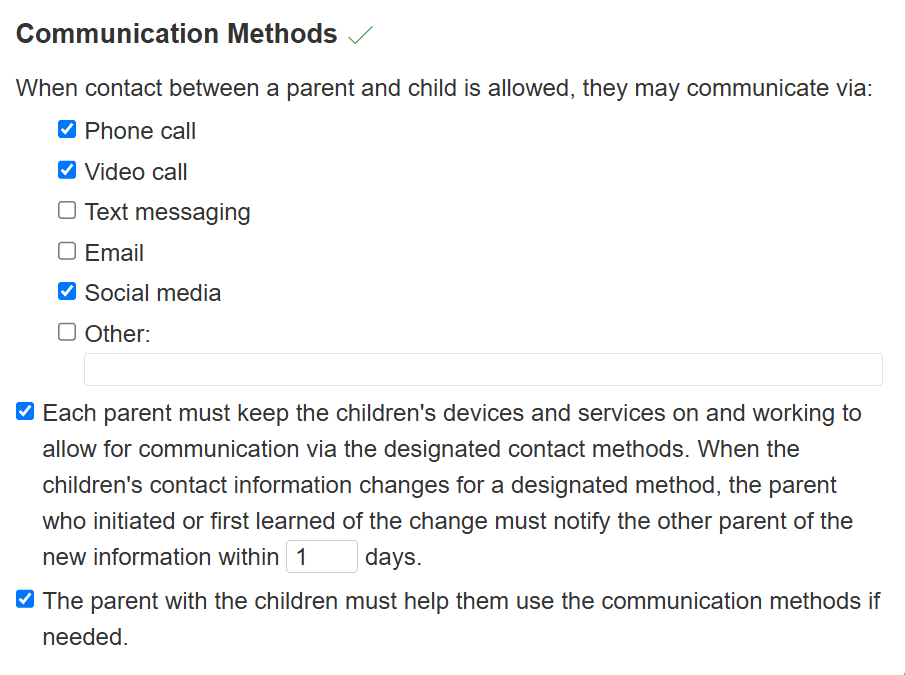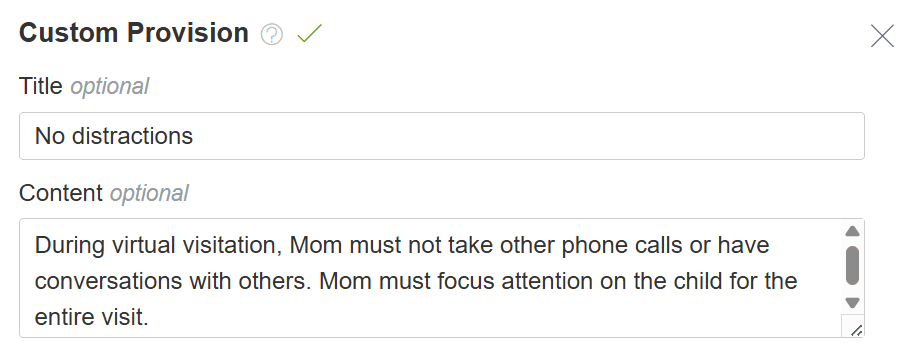What Is Virtual Visitation? Custody Phone Calls & FaceTime
Contact is essential to maintaining healthy parent-child relationships. Virtual visitation allows parents to stay in touch with their child when they can't be there in person.
Virtual visitation suits many situations. Parents who live far away and those with busy work schedules can connect with their children more often. Others may just want to check in with their child between regular visits. Virtual visits also come in handy when the child will be away for an extended period, such as during a school break or vacation. Few states include virtual visitation in their family codes. Yet, judges are often open to approving virtual visitation as part of custody orders and parenting plans if it's best for the child.
Virtual visitation methods
There are more ways than ever to stay connected at a distance. During virtual visits, you can help your child with homework, tell them a bedtime story, see their latest art project and more. Children can also keep in touch with extended family members virtually.
Consider your child's age and interests when deciding which method will work best. Options include:
- Video calling
- Traditional phone calls
- Texting
- Connecting through social media
- Playing a video game together
Noncustodial parents usually request virtual visits. Before adding virtual visits to the custody order, the court will consider factors like whether the child has access to the virtual visitation method. The order may cover how parents will manage any associated costs and how often the visits will happen, among other details. The court might not allow virtual visitation if there's been domestic violence and contact with the parent could be harmful to the child.
There are some circumstances where in-person visits aren't recommended but virtual visitation is used to keep the child in contact with the noncustodial parent. For example, virtual visits can help a child keep in touch with a parent who is incarcerated.
Is FaceTime considered visitation?
Virtual visitation is a supplement to regular visitation, not a replacement. FaceTime can't replace spending time with the child in person, nor can any other video calling service.
Still, video calling is a good alternative when traditional visits aren't an option. You could, for example, transition to FaceTime visits after a parent relocates so the child can stay in touch in between seeing the parent in person.
Video calling feels more personal than a phone call since the parent and child can see one another. Also, since kids are easily distracted, the video element helps keep them engaged. Plus, you can do activities together, like watching a movie or making a craft.
You might have court-ordered FaceTime if a parent has a history of denying visits. Some co-parenting communication apps have features for video calling.
Are phone calls considered visitation?
Phone calls are not a replacement for regular visitation.
However, custody phone calls are a common way to comfort children who miss their parents while away on visits. They help you quickly connect with your child on short notice, and they're a good substitute when you don't have the equipment or internet connection for video calls.
Some parents might feel uncomfortable with video calling — for example, if they don't want the other parent to know where they live. Phone calls are preferred in these situations as it's possible to get an online phone number through a provider like Google Voice to conceal your actual number.
Many co-parents use phone calls for regular check-ins, especially if they're required to let the other parent know where the child is during visits.
Enforcing virtual visitation
If your order or court-approved custody agreement includes virtual visitation, you can take action when your co-parent frequently blocks your calls.
You don't have to stick to a strict schedule for virtual visits, but you should at least establish how many visits will happen over a certain period (a minimum and maximum, or an exact number). This way, when a visit is denied, it's easier to prove you were supposed to have a visit.
Document any denied visits. Take notes, like when the visit was supposed to happen and whether your co-parent contacted you beforehand. With enough evidence, the court could give you makeup visits or another remedy.
Adding virtual visitation to your parenting plan
You may include virtual visitation in your parenting plan proposal or custody agreement. You'll turn this into the court for review.
It's often tough to pin down what to include. Custody X Change makes it easy to explain how you will handle virtual visitation.
Specify the appropriate time for virtual visits, how often visits will happen and how long they'll last. This is better than putting in a vague provision allowing reasonable phone contact, like many lawyers do.
 You can customize this with Custody X Change.
You can customize this with Custody X Change.
Virtual visitation doesn't have to be scheduled, but it's helpful to plan ahead. Parents who want to stay organized and those who don't get along well benefit from setting a schedule for virtual visits.
 You can customize this with Custody X Change.
You can customize this with Custody X Change.
Choose which communication methods are allowed, and state that parents must make sure children have access to the methods and parents have up-to-date contact information.
 You can customize this with Custody X Change.
You can customize this with Custody X Change.
Your child deserves privacy. Interfering in your child's relationship with their other parent hurts your child. Make sure parents maintain boundaries during virtual visitation.
 You can customize this with Custody X Change.
You can customize this with Custody X Change.
Add custom provisions to lay down other rules. You might want to eliminate distractions during the visit, prohibit romantic partners from participating, specify how you'll share costs, etc.
 You can customize this with Custody X Change.
You can customize this with Custody X Change.
Manage any type of child custody visitation with Custody X Change.
